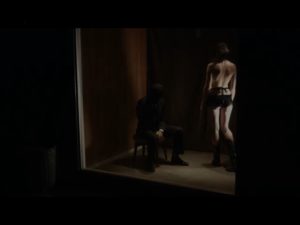Where do old times start when wild things run fast like life does anyway? What. Repeat. Where do old times start when wild things run fast like life does anyway? And what kind of future is prevailing if some artists and acts had created strange, possible musics long before these sound worlds became part of a general consent. Sometimes the futuristic sound worlds of past decades even recurred on older „schools“.
The most magical 2017 reissues from Japan and Spain came on the heels of American minimalism, but informed with a different cultural climate. And speaking of New York City: who thought this autumn would reveal a lost power pop masterpiece of sorts linking the clever anarchism of David Byrne‘s band with the heartfelt spontaneity of Jonathan Richman. Yes, The Necessairies with Arthur Russell, a record that only makes sense when you listen to the whole album in a row. Addictive.
And isn’t it funny so many re-discoveries or first discoveries this year came out of the generally disrespected ´80s and that era’s secret laboratories, from the Grant Avenue Studios in Hamilton, Ontario, to some some really desolate home studio facilities? And one of the most beautiful reissues of this year and the years before this year is one I really missed when it happened. I heard it a week ago for the first time ever, and I thought, well, let‘s talk again about old times and a different version of the future. Halt and catch fire!
So what‘s your favourite reissue of the year. Easy to name the Beatles, Eno, Hassell, or Radiohead. Or some ECM classics from Garbarek to Brahem. But what is the peak at the margins, the hinterland / underground stunner, the ancient, future-caring work crossing your ears as something out of nowhere. Hard choice to make, for me it is an album I will probably quite excessively play in the „Hörnum Jukebox Hour“ during my radio night at the end of December.
“M’Pasi Ya M’Pamba,” the first track on Hector Zazou and Bony Bikaye‘s 1983 collaboration Noir et Blanc, sounds like few other songs in pop music history. It buzzes, hisses and clangs like vintage industrial, its groove something like a higher fidelity take on The Normal’s “Warm Leatherette,” or a technologically advanced Suicide. But add to it the hypnotic vocals of Congolese singer Bikaye, and it takes on entirely different context—a composition with one foot in African pop and the other in a post-punk electronic avant garde. It’s not an obvious fusion, conceptually, but it works brilliantly.
Noir et Blanc, reissued by Crammed Discs more than three decades after its original release, has become an underground cult favorite since its inception on its balance of seemingly boundless experimentation and undeniable accessibility. Released after Talking Heads had introduced mainstream American audiences to Afrobeat and before Paul Simon would find similar inspiration in African music, Noir et Blanc—featuring a band of avant-rock veteran collaborators, CY1—built bridges to heretofore undiscovered territory. It’s music that finds celebration in pulling musical preconceptions apart.
To hear it from the label, the sessions that spawned the album were something like science fiction. “Wall-sized analog computers,” operated by screwdriver-wielding technicians, wires and cables creating an intricate network of spiderweb infrastructure, peculiar linguistic descriptions to drive the direction of the sounds—it all adds up to a strange kind of tech wizardry that was no doubt unusual for the time, and seems even more foreign from an era in which albums can be made on iPads. Yet the sound of the record only amplifies that imagery of wild laboratory experimentation. The eerie bounce of “Mangungu” gallops into outer space, while “Mama Lenvo” is at once a chorus of mbiras and frantic synth arpeggios.
The experimental spirit of Noir et Blanc, unbound by mainstream expectations, is what makes it so consistently thrilling. The abrasive guitar scrapes and persistent percussive stomp of “Dju Ya Feza” creates a weird mutation of industrial, whereas the steady lurch of “Lamuka,” complete with a glorious chorus of saxophones, is one of the album’s most compelling grooves. Not that the album as a whole ever loses its wild, psychedelic allure. When the album’s musicians were committing these tracks to tape, they often sent them through effects and took on an unpredictable, trial-and-error approach.
The final tracks, however, are some of the most vibrant and innovative to have been released in the 1980s, which later translated into a funkier electronic touring band approach after the album’s release. Zazou, Bikaye and CY1 brought a spirited sense of discovery and exploration to their studio sessions that are easy to hear on the finished product, an album so forward thinking that we still haven’t caught up to it, three decades later. (It‘s out now, on vinyl, remastered, new liner notes and comments included.)
(written by Jeff Terich & Michael Engelbrecht)



